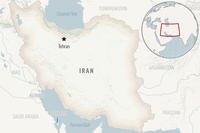
The Navy - in part due to congressional pressure - is examining the possibility of a large, 25,000-ton missile cruiser with nuclear propulsion. Details of the proposals and analyses were revealed this week by Christopher P. Cavas in Defense News and Navy Times.
Two cruiser designs are being considered. The first is a new warship based on the controversial DDG 1000 (Zumwalt class) destroyer, which features the controversial tumblehome hull. This design is being called an escort cruiser to protect aircraft carrier strike groups. It would have gas turbine propulsion, as do all other U.S. cruisers, destroyers, and frigates.
The second cruiser would be a much larger, 25,000-ton, nuclear-propelled ship with a more conventional hull featuring a flared bow. This ship would be optimized for the Ballistic Missile Defense (BMD) mission.
Reportedly, five nuclear-propelled CGN(X) ships and 14 escort cruisers designated CG(X) would be built to fulfill the cruiser requirement in the Navys 30-year, 313-ship plan. These ships would be, in part, a replacement for the 22 remaining Ticonderoga (CG 47) missile cruisers, completed between 1986 and 1994.
These cruiser concepts are taking shape as part of an Analysis of Alternatives (AoA), due to the Navys leadership this fall from the Center for Naval Analyses (CNA) in Arlington, Virginia. While details of the AoA have been closely held, sources confirmed to Mr. Cavas that two different designs are being considered. They also say the analysis will recommend dropping the Kinetic Energy Interceptor (KEI) from the CG(X) program.
The KEI is a large BMD missile under development by Northrop Grumman as a ground- or sea-based weapon to intercept ballistic missiles in their boost, ascent, and midcourse flight phases.
The KEI is much larger than the SM-3 Standard missile developed by Raytheon to arm Navy cruisers and destroyers for the BMD role. The 40-inch diameter KEI is nearly 39 feet long, while the 21-inch diameter SM-3 stands just over 21 feet tall. Both missiles use a kinetic energy warhead, intended to ram an enemy missile.
Sources said a missile launch tube for a KEI missile would take the place of six SM-3 launch cells in a surface ship.
The CNA team is said to be firm in its recommendation for the smaller escort cruiser. Details are less developed on the nuclear-powered variant, sources said.








